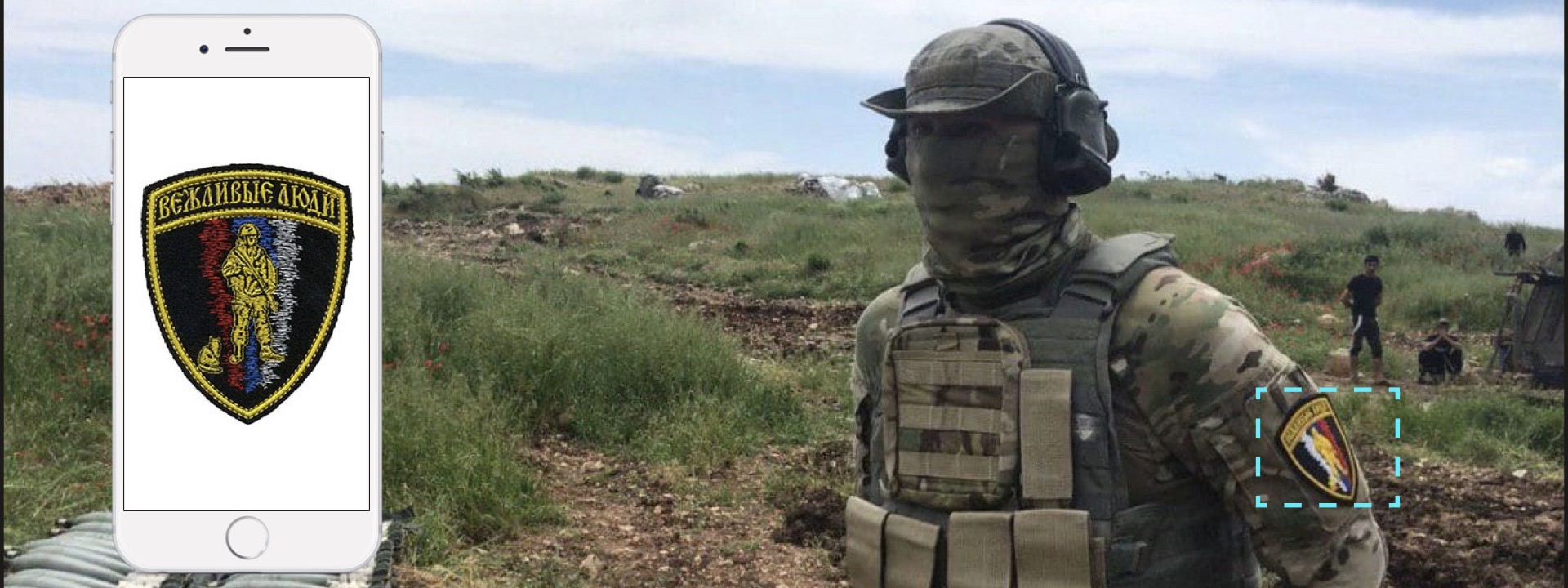Suspected Russian Special Forces in Syria
Newly posted photos revealed the possible presence of Russian special ops soldiers in Syria
Suspected Russian Special Forces in Syria

Newly posted photos revealed the possible presence of Russian special ops soldiers in Syria

In early May, images surfaced online of alleged Russian special operation forces (“Spetsnaz”) soldiers in Syria. The photographs shed light on the scope of Russia’s involvement in the conflict in Syria.
The presence of Spetsnaz soldiers indicates the high strategic value of this location for both Russia and the Assad regime. Russian military command also gain from the conflict, despite loss in personnel, as their soldiers receive valuable combat experience. Their support is also highly appreciated by Assad’s Syrian Arab Army (SAA), as not only do the Spetsnaz train its soldiers, but they also support SAA offenses with precision strikes and real-time integration of air power with ground operations.
One of the first media outlets to report on the photos was Syrian outlet Muraselon on May 11, 2019. According to Muraselon, Russian Spetsnaz soldiers were recorded near the front lines in al-Ghab Plain, which borders the current front lines of the fight between Assad forces and the rebels.

According to the news outlet, the Russian troops were helping the SAA displace the rebel forces from the area by providing fire and close support during the engagements. The soldiers seen in the images likely served as a mortar team, because they appeared to be operating a Soviet-made 2B11 120 mm mortar, an indirect-fire infantry weapon. Soldiers were also seen operating computers, which suggested that they might be guiding airstrikes in the area as well. Several users on Twitter provided open-source data of the scope of the mortar attacks in the region alongside satellite imagery.
Despite the limited visual data, the DFRLab was able to identify the likely location where the images were taken, along with the unit of the photographed soldiers. According to open-source evidence, the photographed soldiers were likely Russian Spetsnaz soldiers and were operating approximately 40 kilometers from the Khmeimim airbase.
Were They Spetsnaz?
The photos posted by Musarelon on May 11 had surfaced on social media networks a day earlier. One of the first users to post these photos was @NawarOliver, who posted two photos with the alleged Russian soldiers. Muraselon supplemented these with additional photos from the location.
The Muraselon article claimed that the soldiers appearing in the photos were Russian special operation forces but provided no evidence to support that claim. Imagery analysis revealed a recognizable military unit patch on one of the combatants. The patch read “вежливые люди” (Rus. “Polite People”) and had the popular insignia of a masked armed soldier with a cat alongside him.

The insignia in question was adopted by Russian forces after the Russia’s illegal annexation of the Crimean Peninsula. While it is widely accepted that the troops that occupied Crimea were likely Russian Spetsnaz, these patches are not confirmed to be an official part of the Spetsnaz unit uniform. Only one of the soldiers was recognized wearing it in the pictures. Furthermore, these patches are widely available to the public on various online shops. In another photo, one of the soldiers was seen wearing a hat with a Russian tricolor on it, further suggesting that the soldiers are Russian.
Social media users pointed out that the antennae seen in the photo resembled the radars of the Zala Aero Group, a subsidiary of Rostec’s Kalashnikov Group based in Izhevsk, Russia, which produces military-grade drones. Zala has reportedly provided unmanned aerial vehicles to various Russian military units and government institutions but also has sold drones to foreign entities. The bags visible in one of the photos also suggested that the soldiers were using equipment from the Zala company.

The Soldiers’ Location
The lack of geolocation data in the published images made the location of the troops hard to pinpoint, albeit not impossible. The published article claimed that the photos were taken in al-Ghab Plain in northwestern Hama countryside, near the town of Qalaat al-Madiq.
One of the main details that allowed for geolocation was the relief visible on the other side of the plain. After visually establishing the side of the plain on which the Russian soldiers were operating, the DFRLab used the Google Earth 3D relief to identify the likely location.

The DFRLab then cross-referenced the same location with a photo showing the other side of the area. A curve in the road and a few small structures appeared to match the features visible in the photo. Comparing the area to the daily satellite imagery confirmed the structures were still in place.

Visual comparison of the higher resolution satellite imagery taken on April 24, 2018, and lower resolution imagery taken on May 13, 2019, revealed that there were few changes in the area. More importantly, the structures seen in the earlier photo also appeared in the May 13 imagery.

The potential location of the Russian soldiers appeared to be very close to the province of Latakia, where the Russian Khmemim airbase is located.

The distance between these two locations is approximately 40 kilometers, indicating increased possibility of Russian troop involvement in this location, given the short distance.
Given the newly available photos, it is quite likely that the Russian Spetsnaz is taking part in the final pushes of Assad’s SAA to retake complete control of the country.
Register for the DFRLab’s upcoming 360/OS summit, to be held in London on June 20–21. Join us for two days of interactive sessions and join a growing network of #DigitalSherlocks fighting for facts worldwide!

